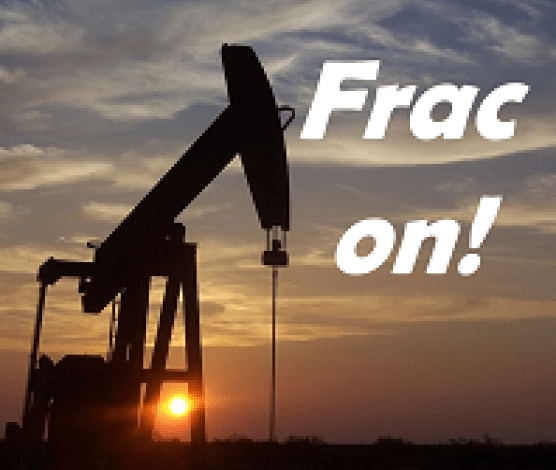US LNG Exports Hit New Record Highs – Watts Up With That?

Guest “Frac on!” by David Middleton
Some LNG Basics
Liquefied Natural Gas (LNG)
Office of Fossil Energy and Carbon ManagementToday, the United States is the world’s largest producer of natural gas. Natural gas supplies about 1/3 of the United States’ primary energy consumption, with its primary uses being heating and generating electricity. While the majority of natural gas is delivered in its gaseous form via pipeline in the United States, the growth in the international market for natural gas has given rise to the use of natural gas in a liquefied form, or LNG.
LNG Basics
Liquefied natural gas (LNG) is natural gas that has been cooled to a liquid state, at about -260° Fahrenheit, for shipping and storage. The volume of natural gas in its liquid state is about 600 times smaller than its volume in its gaseous state. This process makes it possible to transport natural gas to places pipelines do not reach.
Liquefying natural gas is a way to move natural gas long distances when pipeline transport is not feasible. Markets that are too far away from producing regions to be connected directly to pipelines have access to natural gas because of LNG. In its compact liquid form, natural gas can be shipped in special tankers to terminals around the world. At these terminals, the LNG is returned to its gaseous state and transported by pipeline to distribution companies, industrial consumers, and power plants.
LNG Trade
For large-volume ocean transport, LNG is loaded onto double-hulled ships, which are used for both safety and insulating purposes. Once the ship arrives at the receiving port, LNG is off-loaded into well-insulated storage tanks, and later regasified for entrance into a pipeline distribution network.
LNG can also be shipped in smaller quantities, usually over shorter ocean distances. There is a growing trade in small-scale LNG shipments, which are most commonly made using the same containers used on trucks and in international trade, specially outfitted with cryogenic tanks. Other small-scale LNG activities include “peak-shaver” liquefaction and storage facilities, which can hold gas compactly for when it is needed in local markets in the U.S. during times of peak demand. LNG is also sometimes imported or exported by truck from this kind of facility.
In 2020, the U.S. exported almost 2,400 billion cubic feet (Bcf) of natural gas in the form of LNG in large LNG tanker ships, along with a small quantity shipped by container or in trucks. In total, as of August 2021, U.S. LNG has been delivered to 40 countries on five continents. The U.S. also still imports some LNG, mostly to New England, a region of the country constrained by limited pipeline and storage capacity.
[…]
Key Abbreviations
- LNG: Liquified Natural Gas
- Bcf: Billion cubic feet
- FERC: Federal Energy Regulatory Commission
- Frac, Frac’ing: Related to hydraulic fracturing
LNG: An American Success Story
2 Dec, 2021
US LNG exports hit record highs as global gas crunch persists
Author Corey Paul
Natural gas deliveries to U.S. LNG export terminals surged to record levels in the waning days of November, topping 12 Bcf/d as strong global gas demand continued to incentivize operators to run their facilities at full bore.
Total feedgas deliveries to the six major operating U.S. LNG export facilities hit about 12.1 Bcf/d on Nov. 26 and remained near that level for about two days before dropping to about 11.2 Bcf/d on Nov. 30, according to S&P Global Market Intelligence pipeline flow data. This last number compared to about 10.9 Bcf/d on Nov. 30, 2020, as sector activity rebounded from the impacts of the pandemic.
Average flows for November 2021 exceeded 11 Bcf/d.
[…]
Prices at hubs in every region were down sharply in Dec. 1 trading as mild weather underwhelmed U.S. gas markets, according to Platts.
LNG exports, meanwhile, could continue rising into 2022. In addition to the sixth train at Sabine Pass, Venture Global LNG’s Calcasieu Pass LNG export facility is also undergoing commissioning in Louisiana. The developer has said its facility, which will have an export capacity of about 10 million tonnes per year, could begin producing LNG by the end of 2021. Goldman Sachs commodity analysts recently raised their full-year 2022 projection for U.S. LNG exports by 5 Mt to a total of 82 Mt for the year.
S&P Global Market Intelligence and S&P Global Platts are owned by S&P Global Inc.
The skyrocketing growth of US LNG exports has been dazzling.
US LNG export capacity has grown from about 2 Bcf/d when I authored this 2017 post to greater than 10 Bcf/d in 2021 and is expected to reach 14 Bcf/d by the end of next year.
LNG export terminals, currently under construction, will add an additional 8.4 Bcf/d of export capacity over the next few years and an additional 24 Bcf/d of capacity, as yet not under construction, have been approved by FERC.
Despite, the shamdemic-induced drop in LNG exports in mid-2020, this particular hockey stick didn’t even bend, much less break.
This was a truly remarkable transformation.
What’s not to love about this American success story?
It’s an American success story, therefore…
The climate mob is coming for LNG exports
by Paul H. Tice | October 16, 2021The current global energy crisis may finally provide the cover that climate activists need to start dismantling the U.S. liquefied natural gas export industry. Even though LNG has been one of the great American success stories of the shale revolution over the past decade, with the U.S. converting almost overnight from a natural gas importer to an exporter and a major player in the global LNG market, environmentalists and Democratic lawmakers have been pressuring the Biden administration since Inauguration Day to institute a ban on LNG exports.
Now with natural gas prices surging and fears of domestic gas shortages growing as we head into winter, there have been similar calls for an LNG export ban from the business community. In a recent letter to the Department of Energy from the Industrial Energy Consumers of America, the corporate lobbying group argued for the curtailment of export volumes from existing facilities and a government halt on permit approvals for all new LNG construction.
[…]
Since LNG exports represent the main source of incremental demand for U.S. natural gas supply — domestic consumption continues to grow at an anemic annual pace — LNG export facilities are the next infrastructure target for the anti-fracking, pipeline-protesting climate mob.
[…]
Despite the record-high, LNG exports, the current gas storage volume is right in the middle of the 5-yr range.
While natural gas prices have risen above the shamdemic-induced lows of 2020, they are still well below the highs of the LNG importing era (1995-2009).
US LNG imports peaked in 2007
U.S. LNG imports peaked in 2007
The United States imported very small amounts of LNG until 1995, and then LNG imports generally increased each year until peaking in 2007 at about 771 billion cubic feet (Bcf) and equal to about 17% of total natural gas imports. LNG imports declined in most years since 2007 as increases in U.S. natural gas production and expansion of the natural gas pipeline network reduced the need to import natural gas.
In 2020, the United States imported about 49.2 Bcf of LNG from just four countries. This was the lowest amount since 1996 and equal to about 2% of total U.S. natural gas imports.
The Everett regasification terminal near Boston, Massachusetts, receives most U.S. LNG imports, and in 2020, it receved 60% of total U.S. LNG imports; 95% from Trinidad and Tobago and 5% from Nigeria. New England states: Connecticut, Maine, Massachusetts, New Hampshire, Rhode Island, and Vermont, may have significant pipeline constraints when heating demand increases substantially during periods of very cold weather. LNG imports help to meet natural gas demand in New England because the region currently has limited pipeline interconnections with the Northeast and other U.S. natural gas producing regions.
This bit of left-wing caterwauling is hilarious because Massachusetts is dependent on imported LNG from places like Russia, due to their opposition to pipelines:
APRIL 02, 2021
SENATORS MARKEY AND WARREN TO REINTRODUCE LEGISLATION TO BLOCK INFRASTRUCTURE USED TO EXPORT AMERICA’S NATURAL GASCOMPRESSOR Act would prevent the operation of the Weymouth compressor station and similar natural gas projects
Washington (April 2, 2021) – Massachusetts Senators Edward J. Markey and Elizabeth Warren today announced the reintroduction of the Community Outreach, Maintenance, and Preservation by Restricting Export Stations from Subverting Our Regulations (COMPRESSOR) Act, legislation that would block the placement into service or operation of any natural gas compressor station that would be built as part of a pipeline project meant to export natural gas. This bill would ban the operation of the controversial compressor station in Weymouth, Massachusetts, which was constructed to facilitate the distribution of natural gas through Massachusetts and export it to Canada.
[…]
24 Nov 2021 | 21:16 UTC
US senator questions oil and gas companies on rising LNG exports, gas pricesMaya Weber, J Robinson
US Senator Elizabeth Warren has joined those criticizing US energy companies for higher domestic natural gas prices this winter, writing 11 gas companies seeking explanations for exports of record amounts of US natural gas.
[…]
In response to Warren’s letter, API Senior Vice President of Policy, Economics and Regulatory Affairs Frank Macchiarola, asserted that US policymakers also play a role in affecting US gas supplies.
“Rising natural gas costs reflect an imbalance between supply and demand that is exacerbated in regions like the Northeast due to added state-level policy restrictions on building much-needed gas infrastructure that has made the region more reliant on foreign imports,” he said.
[…]
Massachusetts is heavily dependent on natural gas and has no reserves or production. The state has no underground storage capacity and is actively hostile toward the construction of natural gas pipelines… But it does have “New England’s only operating LNG import terminals“…
Natural gas
Massachusetts has New England’s only operating LNG import terminals.
Massachusetts does not have any natural gas reserves or production.85,86 The state receives its natural gas supply from interstate pipelines and liquefied natural gas (LNG) import terminals. Pipeline deliveries of natural gas have shifted as production from the Marcellus and Utica shales in the Appalachians has offset shipments from other regions.87 Natural gas also comes from offshore Nova Scotia in Canada.88 In recent years, pipeline infrastructure has been added to transport natural gas deliveries to the Northeast.89 Most of the natural gas that enters Massachusetts by pipeline comes through New York and Rhode Island.90 Additional pipeline deliveries come via a pipeline that traverses Maine and New Hampshire to deliver offshore, onshore, and LNG-sourced natural gas from Canada.91 The natural gas that is not consumed in the state is typically sent by pipeline to Rhode Island and New Hampshire. A small amount is sent to Connecticut.92
Although Massachusetts receives most of its natural gas supplies by pipeline through other states, natural gas also arrives by tanker at the state’s LNG terminals. Massachusetts has the only LNG import terminals in New England, one at Everett on Boston Harbor and two offshore in Massachusetts Bay.93,94,95,96 In 2020, U.S. LNG imports were less than 7% of their 2007 peak.97 However, in 2020, Everett received the most LNG imports of any U.S. terminal, most of it from the Caribbean, and the Everett terminal handled about 60% of all U.S. LNG imports.98,99 The terminal is connected to regional pipelines, a natural gas utility, and a power plant. LNG is also transported by truck to storage tanks for several local natural gas distribution companies. The Northeast Gateway, one of the two offshore terminals, did not receive any LNG imports in 2020. The other offshore terminal, Neptune Deepwater Port, has been inactive since it received initial LNG deliveries at the time of the facility’s completion in 2010. LNG provides more than one-fourth of New England’s natural gas supplies during peak heating demand days in the winter.100,101
Like other New England states, Massachusetts has no underground natural gas storage and depends on storage capacity in other states to meet peak winter natural gas demand for heating and for electricity generation.102 As increasing amounts of natural gas are used for electricity generation in Massachusetts and throughout New England, assurance of natural gas supply remains a critical energy issue for the region.103
In proportion to the state’s share of the region’s population, Massachusetts consumers account for nearly half of the natural gas used in New England.104,105 The residential sector typically accounts for about three-tenths of natural gas consumption in Massachusetts.106 Slightly more than half of households in the state rely on natural gas as their primary energy source for home heating.107 Although the electric power sector has been the largest consumer of natural gas for almost two decades, in 2019 it used less than the residential sector. The amount of natural gas delivered to the electric power sector declined further in 2020, when it fell to its lowest level in two decades.108 The commercial sector and the electric power sector each accounted for slightly less than three-tenths of the state’s natural gas consumption. The industrial sector used slightly more than one-tenth.109
Talk about Russian collusion!
Dec 10, 2019
Elizabeth Warren’s Massachusetts Loves Natural GasJude Clemente
Elizabeth Warren has pledged to ban fracking when she becomes president of the United States. This would cause real problems for her home state. The Massachusetts economy depends on imported natural gas. In a single year, methane supplies around 465 trillion Btu of energy, or some 50% more than second place gasoline. Massachusetts, however, produces no natural gas itself, making energy imports as integral to the state’s functioning as anywhere.
[…]
Massachusetts though has notorious and severe constraints for gas pipelines. The unwillingness to build more capacity for gas rears its ugly head particularly in winter, when high electricity and heating needs collide. ISO New England has made clear that fuel-security risks, where power plants cannot get the fuel that they need to operate, are the foremost challenge to a reliable power grid. This has helped U.S.-sanctioned Russia, with Vladimir Putin supplying liquefied natural gas into Boston harbor in each of the past two winters. “Why natural gas from Putin’s Russia has to be imported to New England.”
Not just a national security issue, pipelines have much lower greenhouse gas emissions than Putin’s shipped LNG. This indeed all falls in the ridiculous and absurd category because Massachusetts is just a short pipeline away from mighty Appalachia, where Ohio, Pennsylvania, and West Virginia yield nearly 40% of all U.S. gas. The Marcellus shale play in Pennsylvania is probably the largest gas field in the world, even right up there with South Pars shared between Iran and Qatar.
[…]
Massachusetts Senators Elizabeth “Liawatha” Warren and Ed “Dumber than a shoe” Markey and everyone who ever voted for them have collectively earned the largest Ron White Lifetime Achievement Award in the history of the known Universe.




